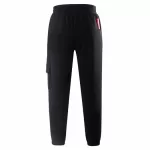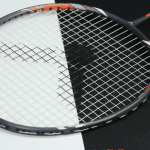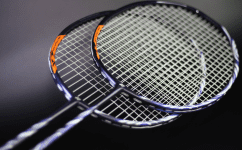
Badminton Racket Yonex ASTROX 100ZZ/ZX Reviews
The hottest topic in the 2020 badminton world will be the postponed Tokyo Olympics due to the epidemic, followed by the ASTROX 100ZZ.
As the 2020 British Open, the last Super 1000 event before the Olympics, came to a successful conclusion in Birmingham, England, Viktor Axelsen and Hiroyuki Endo won their first career titles in the Men’s Singles and Men’s Doubles events, respectively, using the new ASTROX 100ZZ racquets. (Note: For ease of reading, the following text replaces ASTROX 100ZZ and ASTROX 100ZX with 100ZZ and 100ZX).
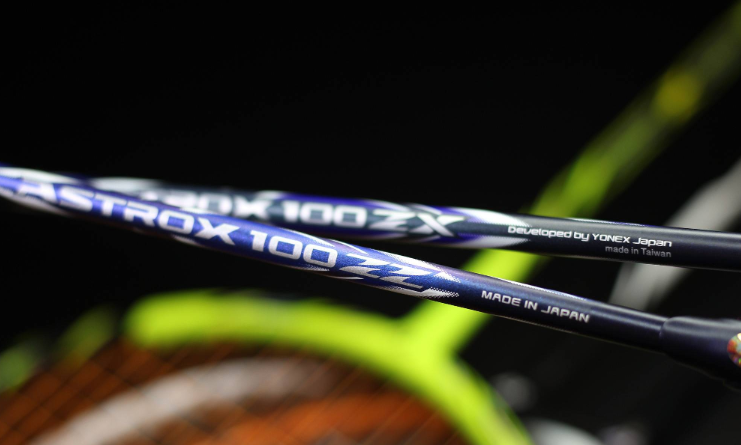
On the other hand, the epidemic swept across the world, the World Badminton Federation on 31 March released a statement on the official website that will freeze the player world ranking and world youth ranking updated on 17 March, effective immediately, the date of unfreezing will be announced.
More so, this “debut that is the peak” of the 100ZZ rightfully became the epidemic stage of the most attention of the Ran star, always on the superstar endorsement, equipment plus no faith in the author actually did not resist the circle of friends and the forum of the frenzied invasion of the 100ZZ, ZX early at the same time in the bag, but one of them! But more from the “Z” series of loyal fans of love.
Of course, I am also very lucky to be able to make friends with a group of lovely players during the epidemic, and through this month’s uninterrupted experience, I can finally share the feeling of playing these two hot and unusual 100ZZ/ZX.
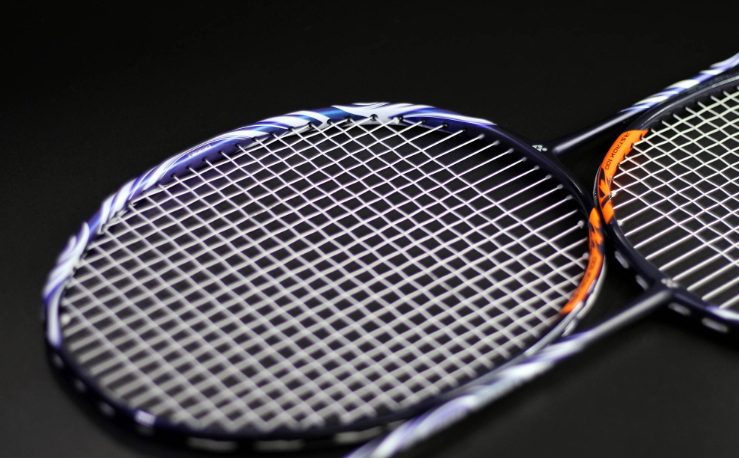
100ZZ and 100ZX are both in dark navy blue as the main colour scheme, still following the “yin and yang” paint distribution design of the Ax series, and even more innovatively, the centre axis of the racket frame is painted with a mirror surface on the left, and the right is painted with a frosted airbrush to highlight its unique status.
The “yin and yang” painting style also makes me more worried about the phenomenon of imbalance between the left and right weights as in the case of the AX77 when it was first painted, but after a simple dynamic balance test, I confirmed that my doubts were superfluous.
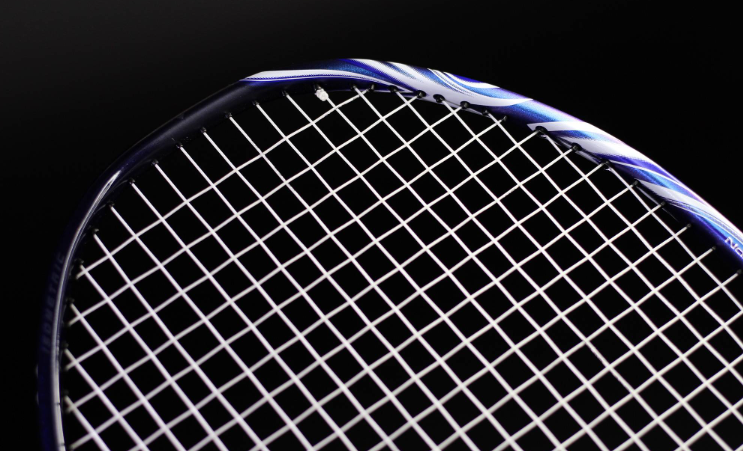
The Ax 100 has an airbrushed pattern in the form of a “wave” that wraps around the side of the frame.
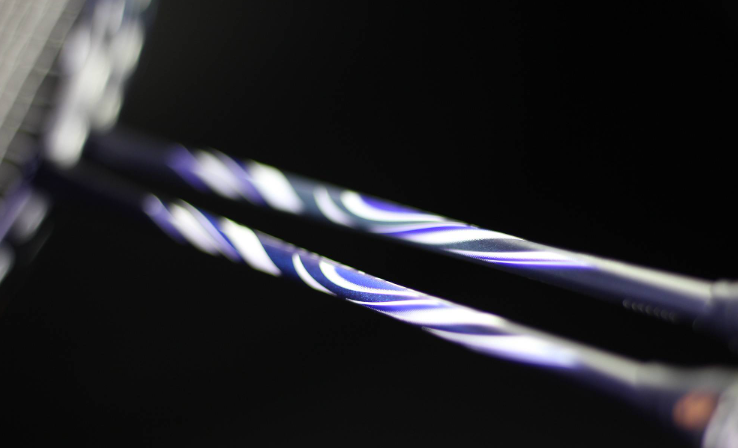
The same application is used on the centre tube of the racket body.
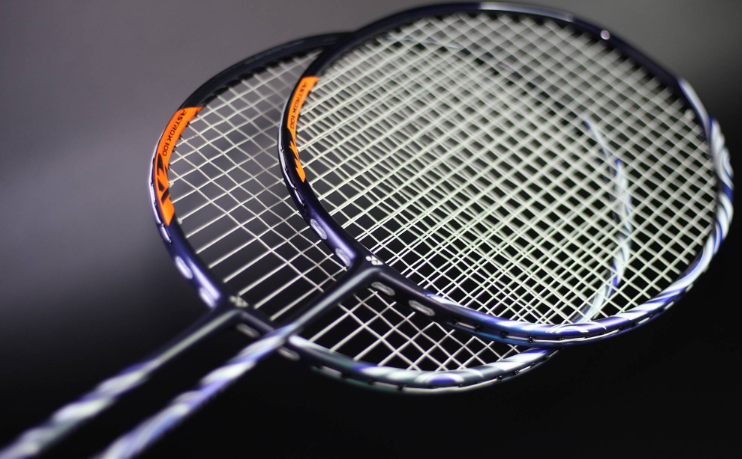
I can’t help but think of the vintage ukiyo-e style of Japan’s Edo period, and some golfers jokingly refer to it as an “Alpine lollipop”, which I’m sure is blueberry-flavoured.
From a distance, it’s hard to tell the 100ZZ from the 100ZX.
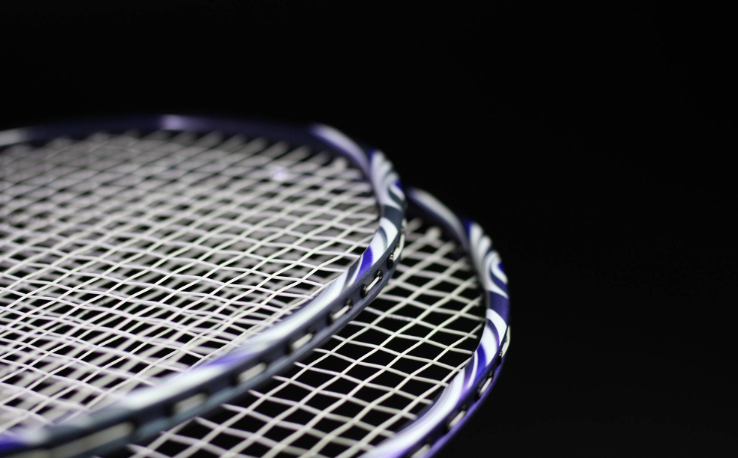
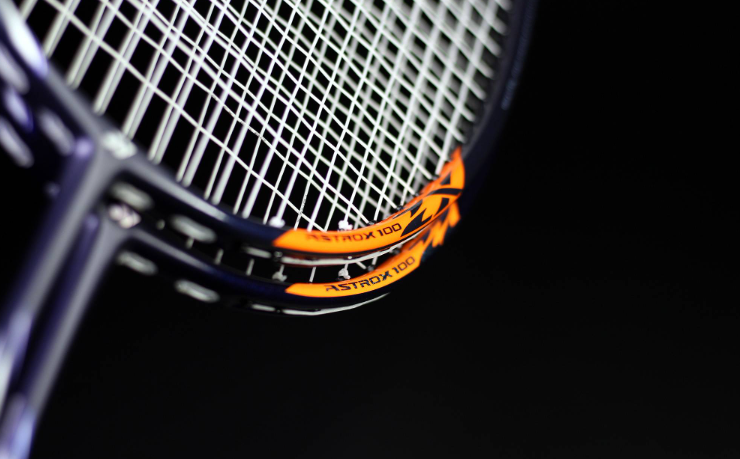
The only difference between the two balls in terms of paint is the colour difference between the model number on the frame at 7-8 o’clock and the ukiyo-e decoration.
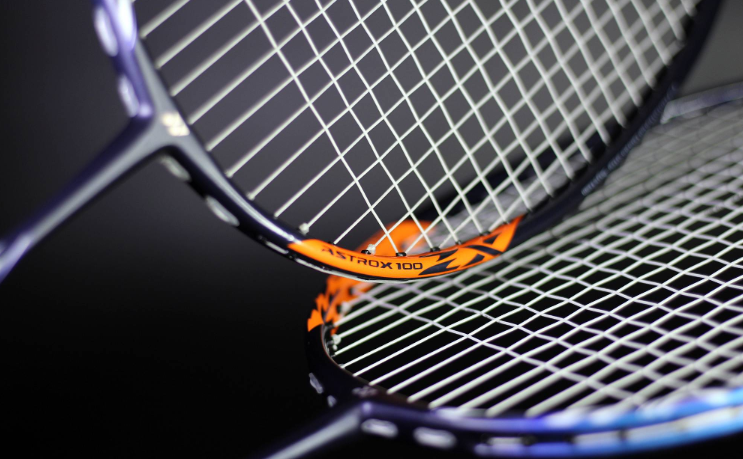
The 100ZX is a solid dark navy blue lacquer, the main colour of the racket, while the 100ZZ is a more dynamic starry sky colour change inkjet. From this alone, it is clear to see that both rackets are clearly defined.
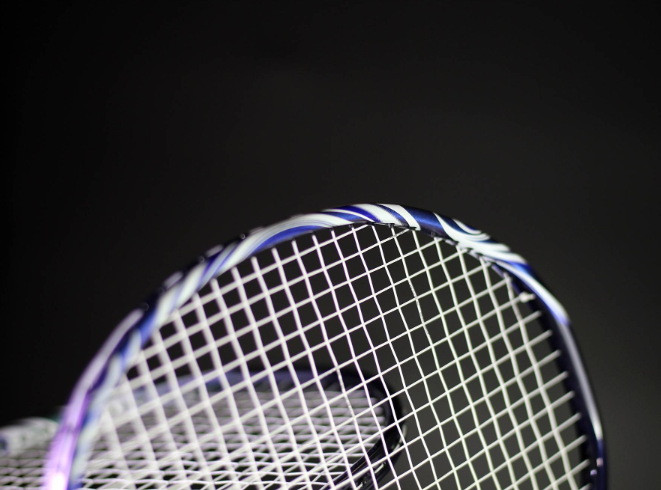
It’s not too much of a stretch to think of it as a fine piece of art.It’s not too much of a stretch to think of it as a fine piece of art.
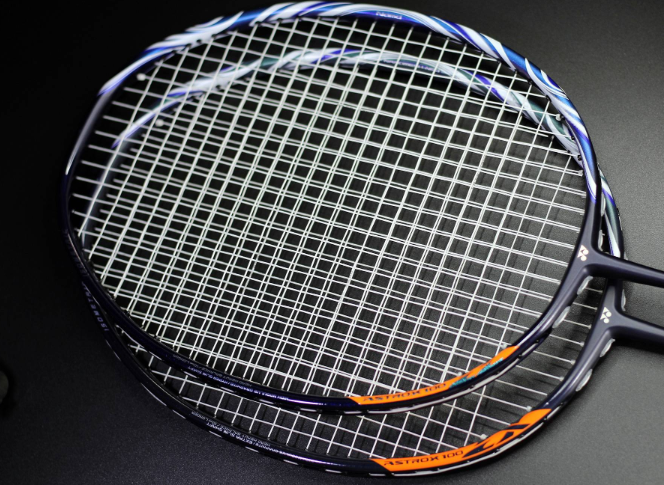
This review shares the AX100ZZ (4UG5) origin: Japan; marking threading poundage: 20-28lbs; racket body length: 674mm; empty racket weight: 85.3g (after the line on the rubber 92.8g); empty racket balance point of 303mm (after the line on the rubber 303mm); empty racket swinging weight of 85-85.5, the length of the handle to the racket cone: 215mm (the handle is extended 10mm, cone cover is extended 5mm); middle tube radius 6.2mm, the length of the middle tube (the cone to the tee position): 205mm; the middle tube is moderately hard elasticity. The length of the handle to the cone: 215mm (handle lengthened by 10mm, cone cover lengthened by 5mm); the radius of the centre tube is 6.2mm, the length of the centre tube (from the cone to the tee): 205mm; the elasticity of the centre tube is moderately hard. The frame area is medium-sized, approximately equal to 354.
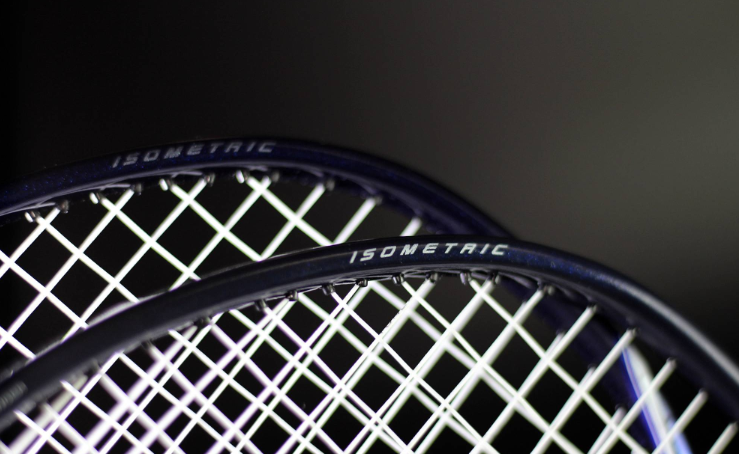
As my main racquets are the DZS, ZSP and ZF2, which are the three “Z” series of evergreen racquets, I have a preconceived notion of the DZS as a cross reference object. In fact, the AX100ZZ (4UG5) is very close to the 3U DZS (balance point of 295mm), but with a slightly heavier head. The AX100ZZ (4UG5) is actually very close to the 3U DZS (balance point 295mm), but with a slightly heavier feel.
Framing adjustments (vertical extension of the sweet spot)
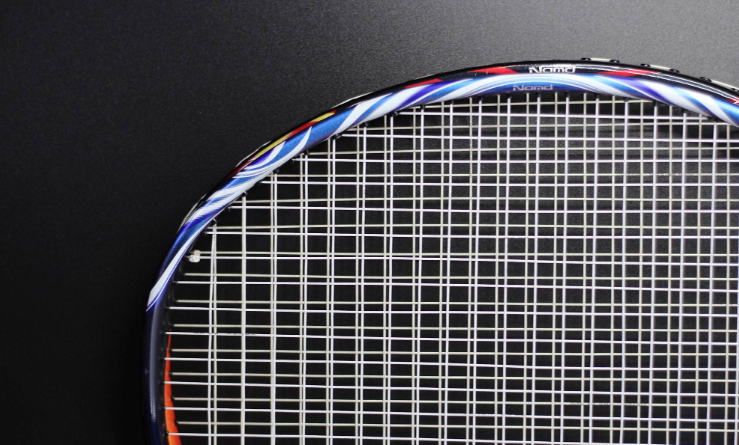
When comparing the frame with the AX99, we can find that the 100ZZ has made slight adjustments to the frame – making the frame “slimmer”. It seems that the frame has been narrowed down to bring the sweet spot together, but in fact, it has not reduced the size of the frame substantially, and instead, it has expanded the sweet spot vertically. This also makes the ZZ more difficult to adapt to at first, even if you are skilled in controlling the premise of the DZS, you will still not be able to seamlessly connect the two racquets, but the frequency of hitting the frame will be significantly lower than the first time you play the ZSP, DZS situation.
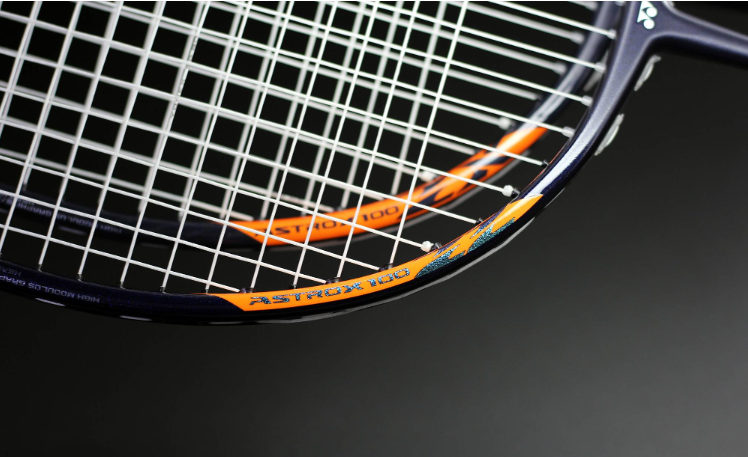
When swinging an empty racket, the medium-sized frame area does not let the 100ZZ have a significant lag in swinging speed, coupled with the 4U of its own weight, although not a windbreaker frame design also puts its swinging speed in a medium position, due to the modification of the frame, the cross-section resistance is relatively reduced, in the same specifications, it will be slightly faster than the AX99, slower than the small frame design of the DZS (both slower than the windbreaker, the box type). The AX99 is a great choice for the same size of racket.
Déjà vu precision strikes
If you have used the DZS before, you will not be able to escape from the instantaneous explosion of body and precise ball path when hitting the 100ZZ high ball, which is so close that it is almost impossible to get rid of the feedback from the racket surface. Of course, this is only for the DZS forehand box type frame, and then recall the DZS racket frame material selection is also clear up, it turns out that the two in the racket frame material selection at the same time are used in the dense carbon.
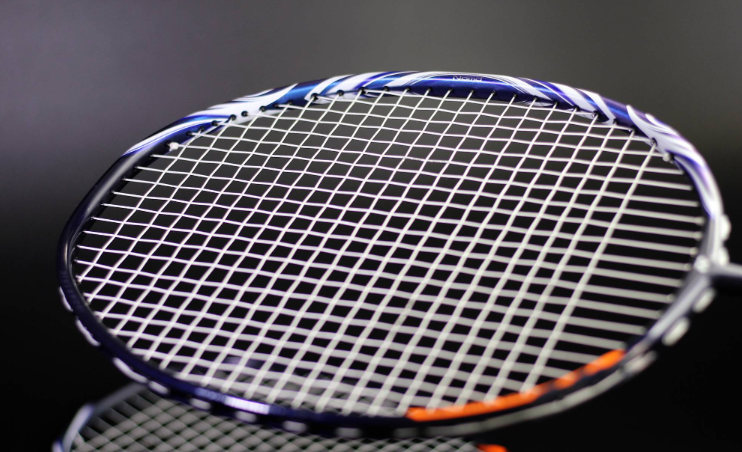
The ultimate midpipe rebound experience
I’d say that the 100ZZ’s stiff frame feedback on shots is similar to that of the DZS, which is bound to dissuade a large number of enthusiasts, after all, there aren’t a lot of amateurs who can really drive the DZS.
But what about the officially advertised “Hyper Slim (6.2mm diameter ultra-thin solid centre tube)”, which provides the same kind of frame feedback as the DZS.
When I broke the 100ZZ centre tube with my bare hands, I could clearly feel that its stiffness value is significantly lower than that of the DZS, and the reflex point of the frame is closer to the head, which makes it easier to press down. In the actual hitting experience, I was really looking forward to and savouring the different feelings brought by the “solid centre barrel”, but unfortunately: apart from the fact that I felt it was easier to drive and easier to hit with the centre barrel deformation and ejection sensation compared to the AX99 and the DZS, there was nothing else amazing; the 100ZZ has achieved as much as possible a reduction in the diameter of the centre barrel, and the centre barrel is as small as possible. The 100ZZ reduces the diameter of the midpipe as much as possible, and fills it with a new type of material to enhance the elasticity and cushioning of the midpipe in the form of “solid”, lowering the threshold of control.
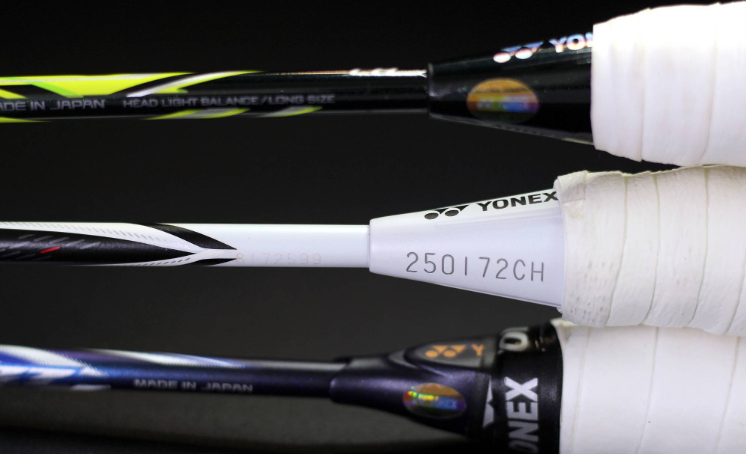
So only by comparing the length of the centre tubes of the ZSP, DZS and 100ZZ racquets can you appreciate the uniqueness of the 100ZZ’s centre tubes. The thinner centre tubes do bring more elasticity gain, but at the same time, the requirement for accuracy is also increased, and it is obviously the most important thing to do to make sure that the ball doesn’t play out of order.
As we can see, the length of the centre tubes of the three racquets (from the cone cap to the frame tee) are: 223mm (ZSP), 205mm (DZS) and 205mm (100ZZ) respectively. Shortening the centre tube reduces the swing range and also shortens the force arm, which gives the 100ZZ a good performance in spot kills with a relatively fast swing speed.
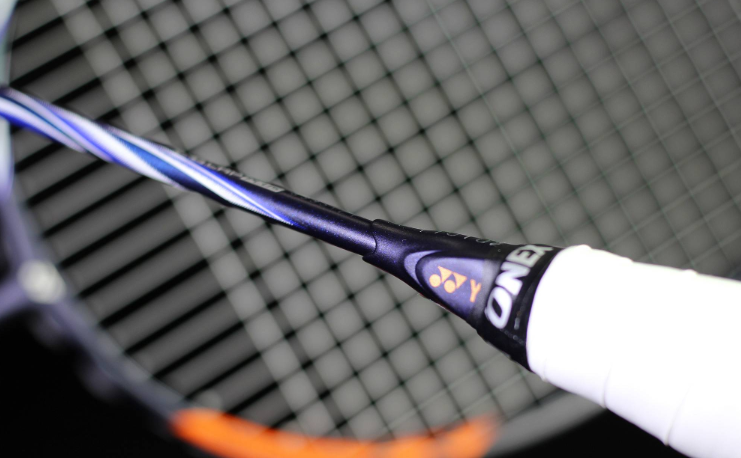
Not only that, in order to improve the handling of the racket, adhering to the AX series of unique nozzle sleeve tube also ushered in the upgrade of the E.B-CAP upgrade version – E.B-CAP PLUS (extended version of the nozzle sleeve cone cap design) thought at first on the network is also based on a spy photo of the cone cap to identify the other models of the 100ZZ coatings demo.
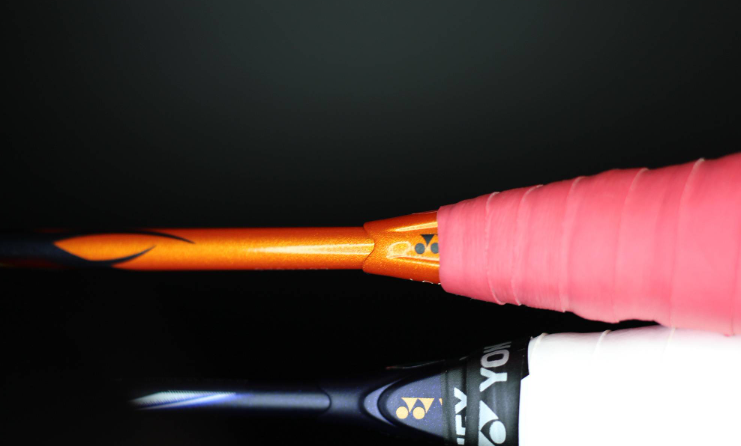
The E.B-CAP PLUS is not only longer (5mm) but also more ergonomic and easier to hold.
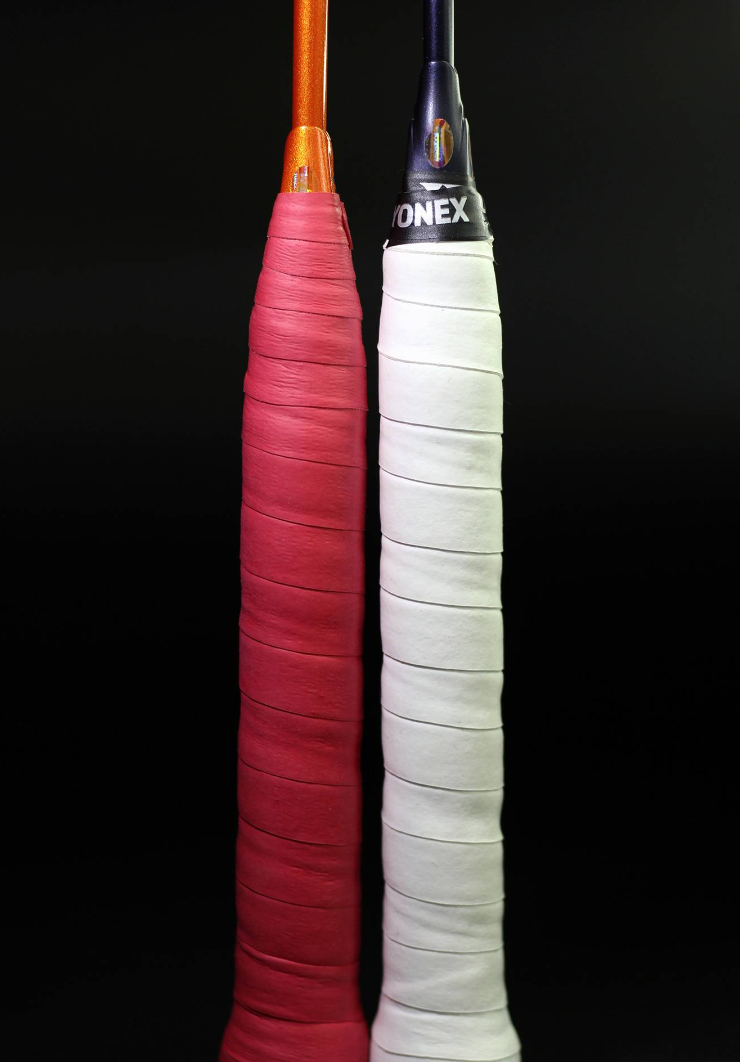
We know that on the premise of ensuring that the length of the racket body remains unchanged, a series of initiatives to lengthen the handle and cone will certainly shorten the length of the centre tube to a certain extent, and it is precisely for this reason that a shorter centre tube, in the form of a “Hyper Slim shaft (6.2mm ultra-thin and solid)”, can be achieved in the relatively shorter and thinner case. This is also through the comparison of the 6.6mm longer 100ZX without Hyper Slim shaft (total length of 674mm, centre tube 205mm) and other data and the author’s own conception of the combination of body feeling to reach the conclusion, just for reference.
Consecutive raids are never gravity infested
The longer cone is not only ergonomically designed, but the more forward grip is undoubtedly designed to improve the overall manoeuvrability of the racket, which lays a solid foundation for doubles net play. With the forward grip point, the racket can be used to block early in the centre court, which is a “physical weapon” for blocking at the net.
However, to be honest, the fluid cassette is still at a disadvantage in terms of swing speed in the mainstream windbreaker cassettes, but the good thing is that the stability of the cassette is more reassuring.
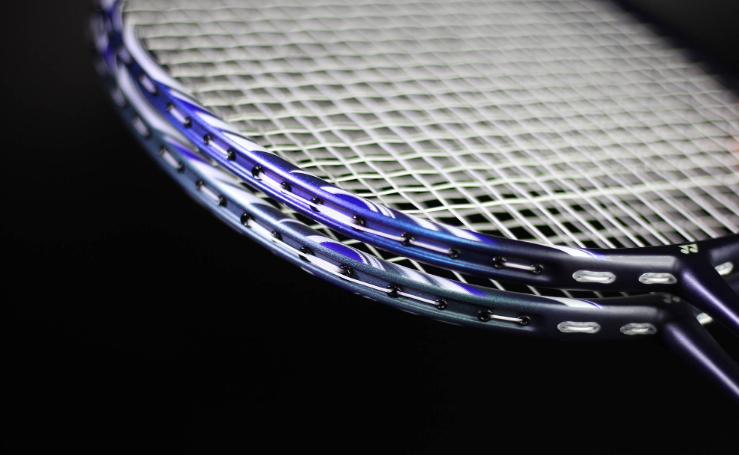
The shortening of the centre tube and the use of the sleeve’s fish mouth cone cover minimise the excess swing of the centre tube while ensuring the directionality of the 100ZZ’s ball. In the hitting experience, the 100ZZ’s high balance, downward driving force against the forward folding point and stable directionality have made it possible to achieve a more efficient and consistent attack than the same specification of the DZS, and it is even sufficient to hold a candle to the 3U DZS with its 4U body. The 100ZZ is still not a match for the 3U DZS. Nevertheless, the 100ZZ still doesn’t have the absolute power to attack.
The stiff frame feedback is not friendly to players who are used to seeking attacking opportunities with the help of pulls and hangs, as I paired it with the rigid attacking Bg-80 (28lbs), which has a weak ball wrapping feeling when hitting the ball, little sense of unloading, and the ball is too dry and brittle, and the performance of the other one with the Bg-66um (27lbs) will be a lot better.
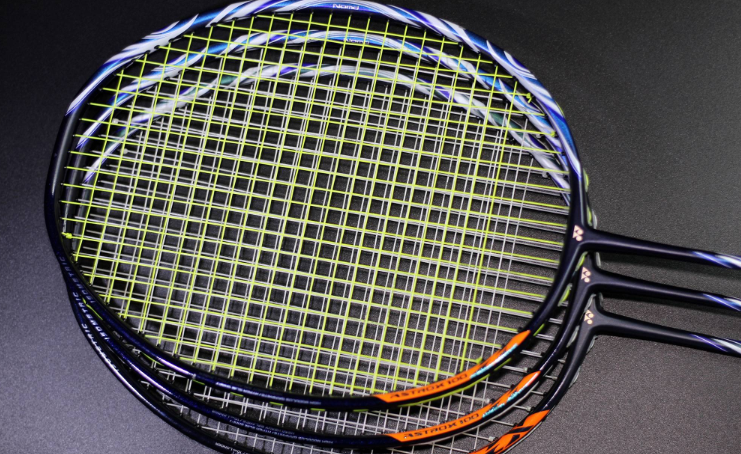
If the improved attacking power of the DZS was not enough for me to get a 100ZZ, the most amazing thing about the 100ZZ that I could not have imagined was its excellent defensive release. The longitudinal sweet spot not only improves the forgiveness of the racket on shots, but also the medium size of the racket face makes me wonder about the “Z” designation, what happened to the small “Z” frame?
Combined with the use of New Dimension Carbon to bring out the resilience of the middle barrel, compared to the weak defence of the DZS predecessors, the 100ZZ and 100ZX have the best defence among the “Z” series rackets, and also allow you to be confident when picking up a high ball!
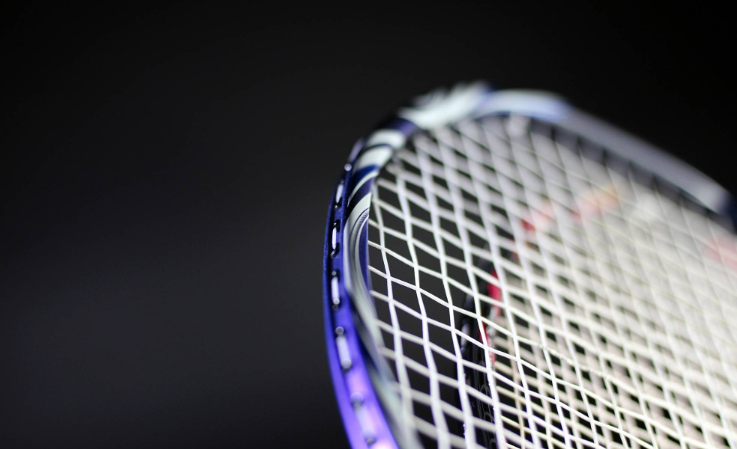
Rigid feedback frame characteristics, with high net pressure of the overall line bed, making the 100ZZ, 100ZX in front of the net in the tussle to pay particular attention to the road control, a little inattention will be easy to bounce the ball over the high net by the opponents take advantage of the momentum of grabbing and pushing the pouncing.
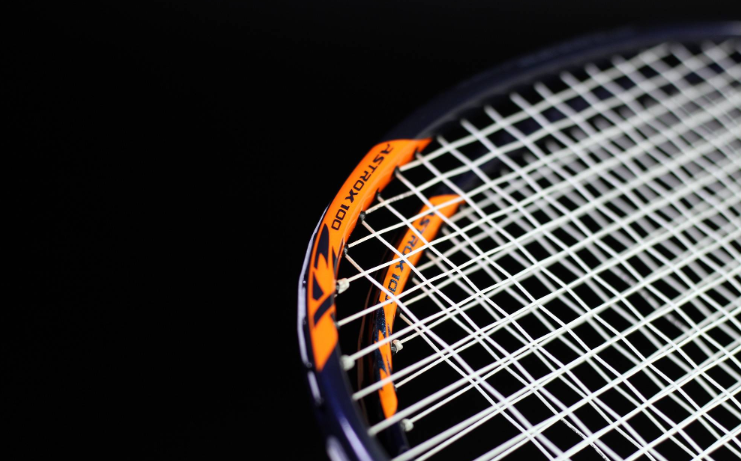
AX100ZX (4UG5) Origin: Taiwan, China; Logo threading poundage: 20-28lbs racket body length 674mm, empty racket weight: 84.5g (93.1g after the upper line on the rubber); empty racket balance point: 310mm (310mm after the upper line on the rubber); empty racket swing weight 89-90, the length of the handle to the racket cone: 215mm (the handle lengthened by 10mm, the cone cover lengthened by 5mm); middle tube radius 6.6mm, the length of the middle tube (the cone to the tee position): 205mm; the middle tube is moderately hard elasticity. 5mm); centre tube radius 6.6mm, centre tube length (cone to tee position): 205mm; centre tube elasticity is moderately hard. The frame area is medium-sized, approximately equal to 354.
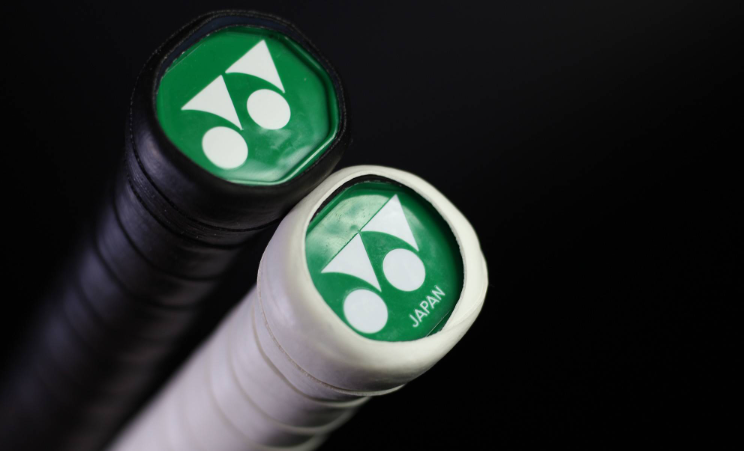
Compared to the AX100ZZ, the biggest parameter differences between the AX100ZX and the AX100ZX are that the 100ZX is of Chinese-Taiwanese origin (with no JAPAN lettering on the bottom cover), and the diameter of the centre tube has been adjusted to 6.6mm.
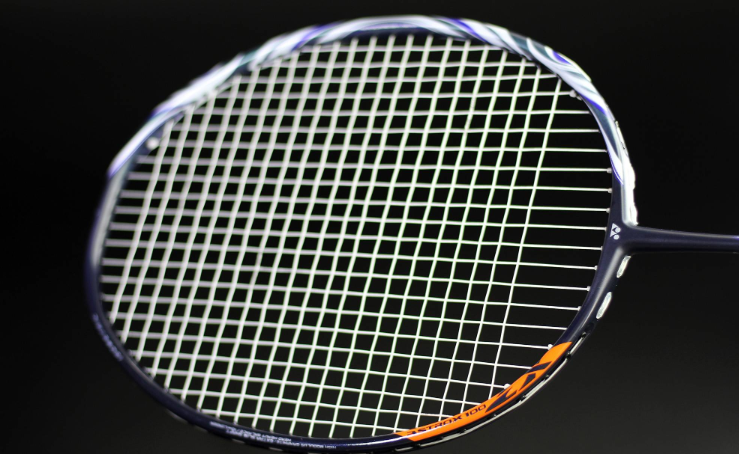
In gloss, the 100ZX is slightly more subdued and dull than the glittering 100ZZ, with the “Ukiyo-e” motif colours leaning more towards a darker green.
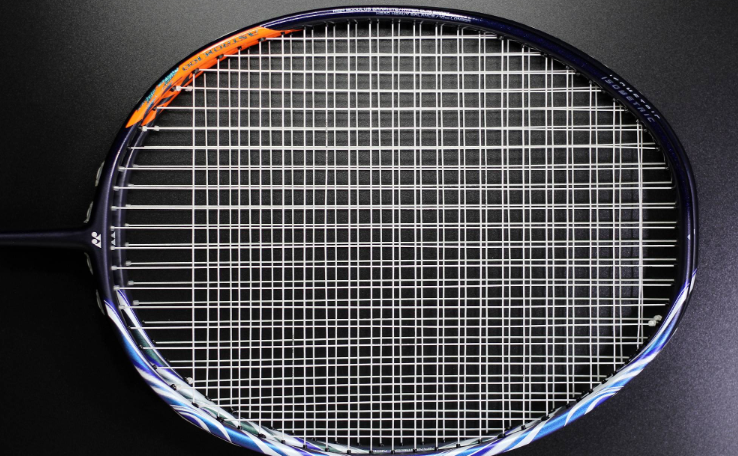
If the 100ZZ is positioned as a racquet that focuses on attacking consistency in the front court in doubles, then the 100ZX is definitely a heavy gun to do the “dirty work” in the back court. 100ZX will be more head-heavy in the hand due to its more forward balance point, and the swing weight will be greater than that of the equivalent specification of AX99 and the equivalent specification of ZF2 is very close. The 100ZX is very close to the ZF2. Many golfers may have the preconceived notion that the 100ZX is a lower configuration version of the 100ZZ, which will be easier to handle, after all, the mid-range price is right there.
However, in practice, the 100ZX is significantly easier to handle than the 100ZZ, and its high swingweight makes it particularly good at heavy attacks.
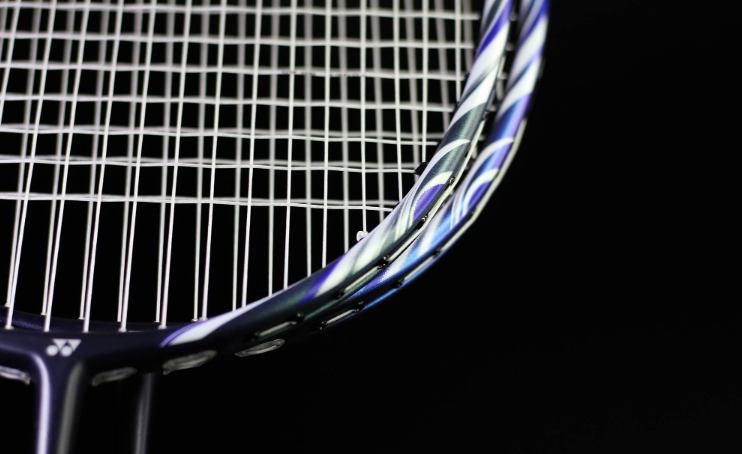
Similarly, the 100ZX has the same excellent ability as the 100ZZ in passive defence, and is superior to its “Z” predecessors in terms of power play and top, pick, point, pivot.
I will understand 100ZX as 100ZZ advanced singles or more suitable for men’s doubles, mixed doubles backcourt attack of a strong offensive racquet, it will be easier to manipulate than the previous ZF2 on the hand, the middle tube is easier to drive than the DZS, ZF2, the defensive ability is outstanding, the same recommended for amateurs to start 4U specifications.
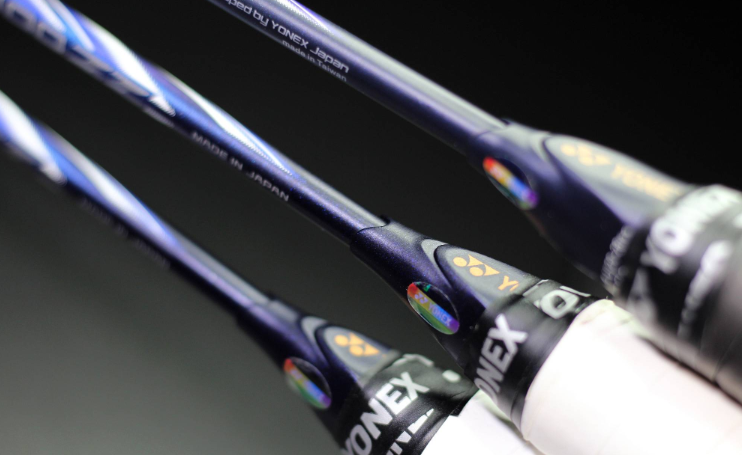
You don’t need to compare the 100ZZ and 100ZX if you get both, trust me! You will definitely prefer the 100ZZ, and it’s hard not to be impressed by the bright starlight logo. Of course, if you like the 100 but don’t have enough budget for the time being, the 100ZX is also a good choice, after all, the powerful attack of the new carbon is still very fragrant.
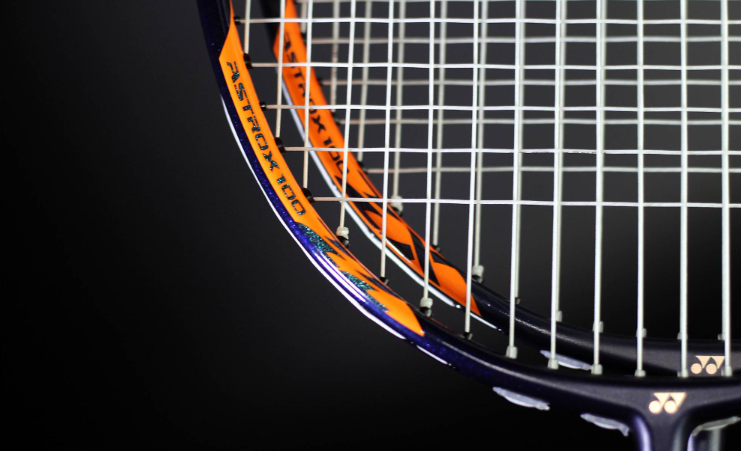
Threading with: love the net against the flat draw attack, and back court attack of the ball players recommended with Bg-80, for those who prefer to control the feel of the ball players recommended with Bg-66um, specifications or more recommended to start 4U specifications, after all, for the fluid box box type 100ZZ, 100ZX, do not choose the case of 4u, the swing speed is still too slow.
Although the 100ZZ/ZX has a high degree of difficulty in getting started, its excellent hitting performance is also worth the patience and care to adapt to taste. Nowadays, YONEX’s “Z” series is still on the road of pursuing the ultimate, but it is also widely accepted by more international players and amateurs, which inevitably makes the 100ZZ and 100ZX become another classic racket named after “Z”. The 100ZZ and 100ZX will surely become another classic racket named after “Z”.




